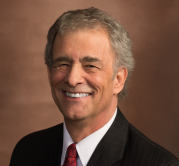Want to deliver excellent service? Offer an excellent service!

Ask any financial institution about its mission and it will likely include “service-centric” or some variation of the idea. It’s something all smart institutions strive for. But excellent service doesn’t happen in a silo or start and end with tellers. It’s an all-encompassing idea that should be at the forefront of every decision and every offering.
Yet some credit unions forget this part of their mission when it comes to providing a solution for overdrafts. Some overdraft programs – defined by data-driven algorithms that calculate unique and ever-changing limits for each member – seem designed to fail important service expectations. By contrast, fully disclosed overdraft programs with static limits offer a simple solution that empowers members to make informed financial decisions.
Let’s compare how each method of overdraft protection delivers on serving your members’ best interest.
Overdraft Limits
With a data-driven overdraft solution, limits vary for each member based on factors like average daily balance, direct deposits, etc. These limits change as the data changes. So how can your members ever know how much they could overdraft? Unfortunately, they can’t. “Data-driven” feels safe to some credit unions, and provides the feeling of having control, but it comes at the expense of providing first-rate service.
In a fully disclosed overdraft program, the limit is the same for everyone, all the time. Predictable, steady and reliable — all things that members appreciate, and count on.
Ability to Repay
While there’s an argument to be made that individuals with higher balances may be less risky overdraft users and therefore deserve a higher overdraft limit, I think this makes too many assumptions. Your members could have accounts elsewhere, have varying degrees of liabilities, or any number of other scenarios. The ability to repay is based on a lending process to determine credit worthiness. We can’t know everyone’s financial story from one account snapshot, so from a service standpoint it only seems fair to treat all members equally.
Moreover, overdrafts are not subject to Truth in Lending regulations, so care should be taken to avoid the appearance of a credit product.
Transparency
Overdraft programs without an established limit by their very nature cannot be fully disclosed — no limit can be stated at the beginning because it frequently changes.
Fully disclosed overdraft programs require members to opt in before ever using them. Being transparent upfront gives individuals the power to make an informed decision about whether to use the service or not.
Employee Understanding
Ever try to explain something you don’t fully understand? How about trying to do so to an upset member who keeps getting more confused by what you’re saying? It’s not fun, and it is bad for morale. Data-driven overdraft solutions are designed to be unexplainable in simple terms — they’re highly technical, with ever-changing limits based on information a person may be uncomfortable being judged on.
For a more service-centric option, an overdraft program with simple rules that can be explained to an individual easily and concisely fits the bill. Employees will remain poised and confident during inquiries.
Bottom line: You can’t offer great service if you can’t even explain your service to the people who use it.
Member Understanding
If your employees can’t explain your service, how is a member ever supposed to understand it?
Do you want your members leaving confused, frustrated and suspicious? Or do you want them to feel empowered, grateful and satisfied – which will lead to trust, loyalty and advocacy of your credit union to others.
The solution is clear: If you want to offer excellent member service, offer an excellent service to your members. Fully disclosed overdraft protection programs line up with service-centric missions.
And, if all else fails, use this litmus test: If I had limited funds available and needed to use an overdraft program, which type would I rather rely on?
For more information on implementing a service-focused, fully disclosed overdraft solution with a 100 percent written compliance guarantee, contact your local JMFA representative.

